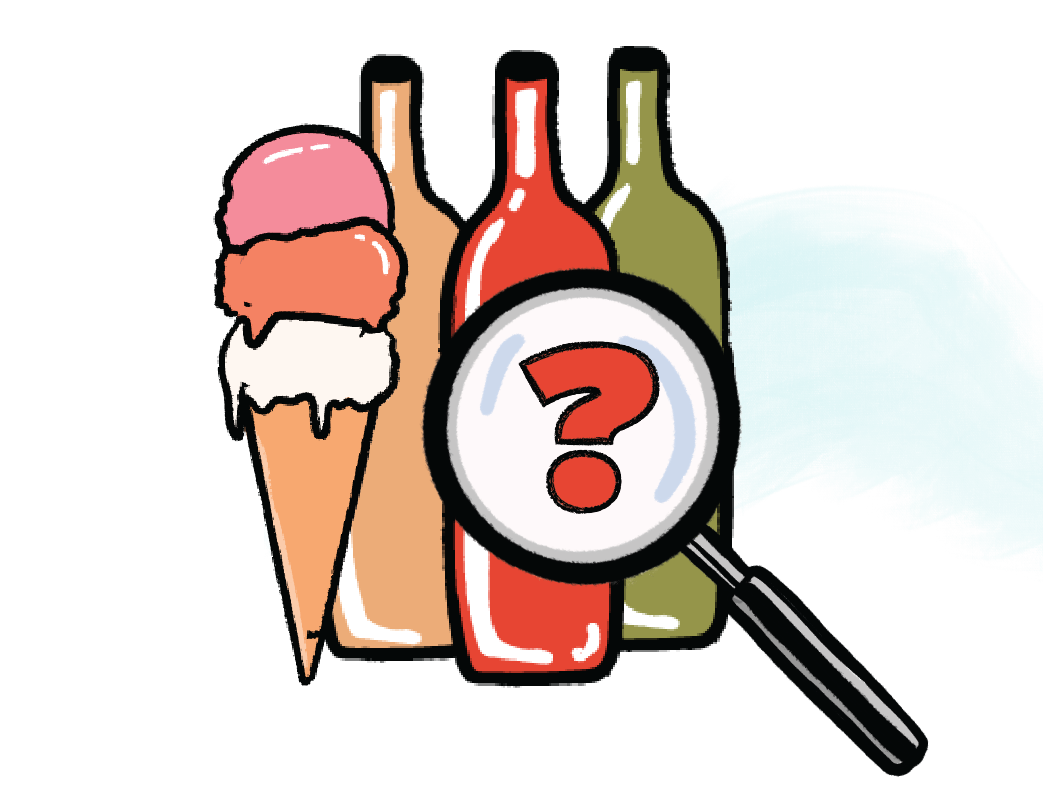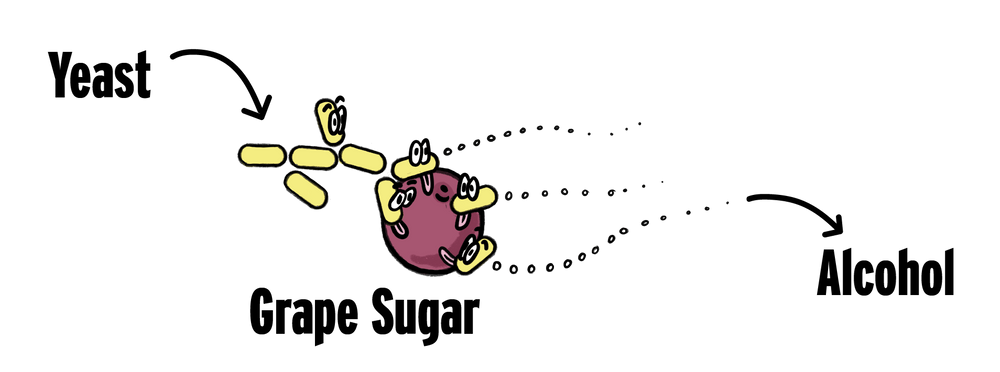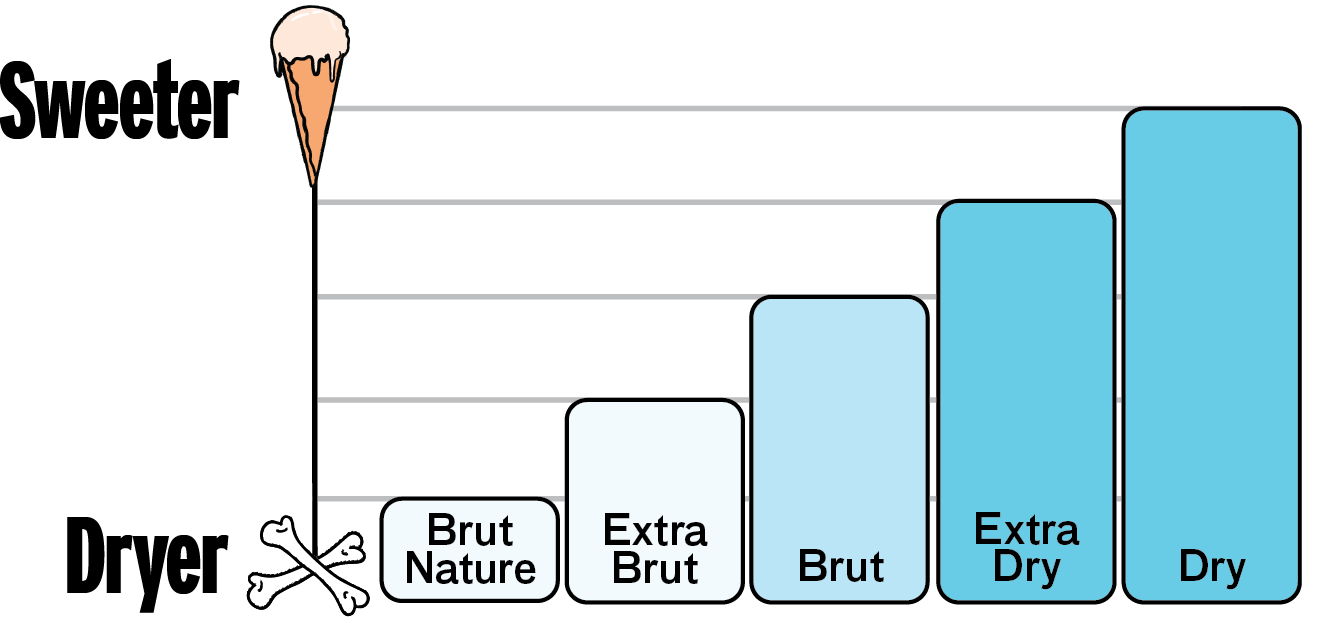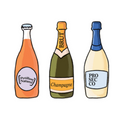

Before you buy, is that wine sweet or dry? Sometimes it's not clear on the label. So here are 6 pro tips to help you find out!
All you want is a wine you'll like. So there's nothing worse than running to the shop for a bottle of wine, grabbing something, coming home, pouring a glass and then finding it’s either way too sweet or way too dry for your taste. Ugh! If only it was mentioned on the label, you would have been able to know the right bottle to pick. Well, wine labelling is a funny thing. Often the sweetness level of the wine is not clearly communicated on the bottle. So how can we know how much sweetness or dryness to expect in a wine before we commit to purchasing and opening it?
The pros use 6 easy tips.

But before you can master these 6 tips, it's important to understand two fun wine geeky fundamentals of sweetness:
1. Sweetness in wine is measured in grams per litre and is referred to as ‘residual sugar’ or ‘RS’.
2. The sweetness scale runs from ‘bone dry’ (no detectable sugar), to dry (slightly detectable sugar), to ‘off-dry’ (a slight kiss of detectable sugar), all the way through to medium and eventually super-duper dessert ‘sweet’ where the sugar is more than obviously aparent.
Okay. Now you're set!

Tip #1 - %ABV--red
Fermentation is effectively the process of turning a sweet fruit juice - containing natural sugar - eventually into a dry wine. Basically, the yeast eats sugar and excretes it as alcohol. Think of Pac-Man eating all those dots... Pac-Man is the yeast, the dots are the sugar. Nom nom... Therefore, the more sugar that gets consumed, the greater the alcohol level. So with ABV reaching up to 14.5% on some wines, you could logically assume a wine containing less than 10% alcohol will probably have some residual sugar left in it as fermentation was potentially cut short... before Pac-Mac could finish eating all the dots.

Tip #2 - Prosecco tends to carry more sweetness than you might think!--aromatic
Probably one of the craziest labelling terms out there. If you want a DRY wine, and you see a Prosecco label with the words ‘Extra Dry’ or ‘Dry’... Take note! These sparklers will contain anything from 12 to 35 grams per litre of RS - far from dry. Want a dry Prosecco? Look for ‘Brut Nature’, ‘Extra Brut’ or ‘Brut’, and you’d be at your limit!

Tip #3 - ‘Doux’ or ‘Dolce’--cellar
Simple. This means sweet in French 🇫🇷 and Italian 🇮🇹 respectively. You may also see ‘Demi-Sec’ on a lot of wine labels, these often mean the wine is half sweet, which is actually pretty sweet. These make for wonderful dessert sparklers with fresh berries or bitter chocolate, just make sure you check that label!

Tip #4 - That’s ‘Kabinett’, not ‘Cabernet’--plum
We've heard it all before... “all Rieslings are sweet...” Away with you! Admittedly the German wine classification system is one of the more confusing at a glance. Crazy-long words like Qualitätswein and Trockenbeerenauslese are enough to send anyone running for the steep hills of the Mosel. So remember this: Kabinett. Kabi’s are Riesling, and they’re the lightest style of quality German Riesling. They do range from dry to off-dry, but will always have heaps to acidity to balance out those lovely fruit-driven flavours. So if you want a super crisp, fresh, white, that’s just like biting into a Granny Smith apple, this style’s for you!

Tip #5 - Trocken--racy
Staying with the Germans and Riesling: if you want dry wine, then Trocken is your friend. The literal translation here is ‘dry’, and is particularly important on those tall, skinny, green Riesling bottles you see from Germany - some of which can be off-dry, and the rest not so much!
Tip #6 - The Region--red
If you want to simplify things - which is often the best way to navigate the wine trade - then we suggest looking at specific wine regions as a barometer for your sweetness needs. The words ‘Trocken’ or ‘Kabinett’ will not always be on a label, and this is where we start to enter a grey area that catches even some of the most experienced wine buyers out. When faced with this dilemma, it may be best to look elsewhere. If we know many Mosel (from Germany) Rieslings can be sweeter in style, eliminate the risk by looking at a Riesling from say, South Australia. The Eden Valley and Clare Valley are both excellent pathways to quality Riesling and are consistently dry. Unless their labels have ‘Late Harvest’, ‘Cordon Cut’, or ‘Botrytis’ that designate a sweet dessert wine made with extra-ripe grapes that have been left to shrivel up sweetly like sultanas. Yum!

Tip #7 - The Grape--aromatic
There are some grapes that you just kinda know if they’ll be sweet or not. If you're after fizz, Moscato is made with plenty of residual sugar, so if you want a sweet dessert sparkler, this is perfect and affordable. At the other end of the spectrum, Sauvignon Blanc from New Zealand, Chile and the Loire Valley always tend to be drier, making these styles a safe bet for dry white wine lovers. Chardonnay can be tricky, particularly if it has seen some oak where the perception of sweetness can be higher, regardless of the RS.
Finally, one last word. Let's be clear. Sweet wine is delicious, awesome, lovely, and some of the most iconic and collectable wines in the world are sweet! So let's not be poo-pooing the style, no way! It's just nice not to be left surprised if you end up with a sweet tipple when you were more in the mood for something dry.

About the Author
Harry started his adventures in New Zealand learning how to make wine before squishing grapes with his feet (literally) in Portugal. He is a contributing wine writer for a number of UK magazines as well and a former wine director and consultant specialising in wine list development. When he isn’t drinking wine, he loves a beer and collecting records before spinning a few tunes.
Do you know your wine personality? If your answer is no, take our quiz to find out which wines to pick up next and build your box!
Build my box





